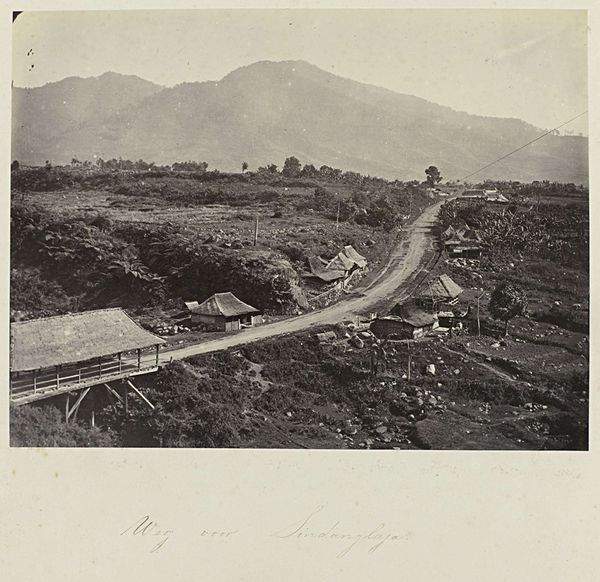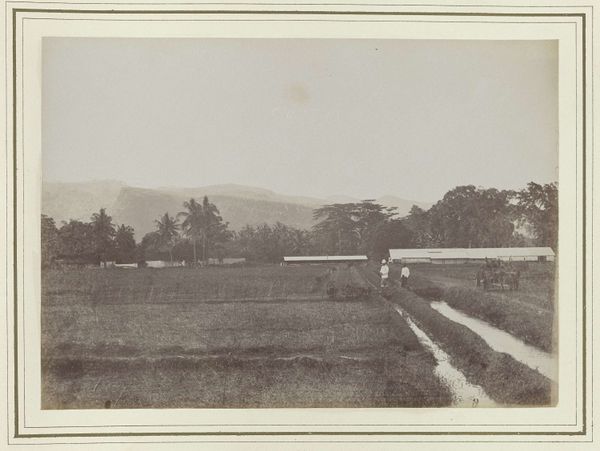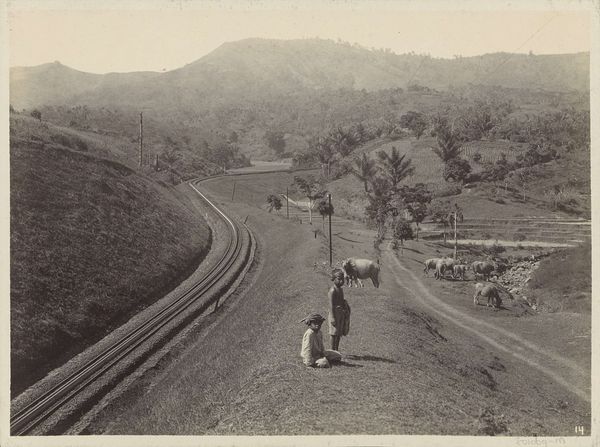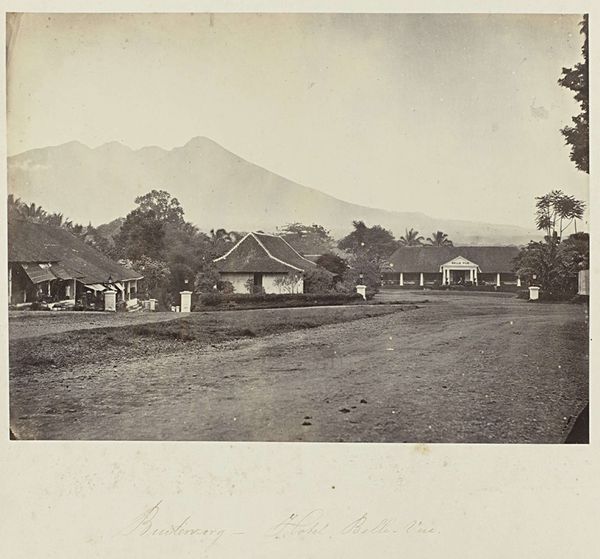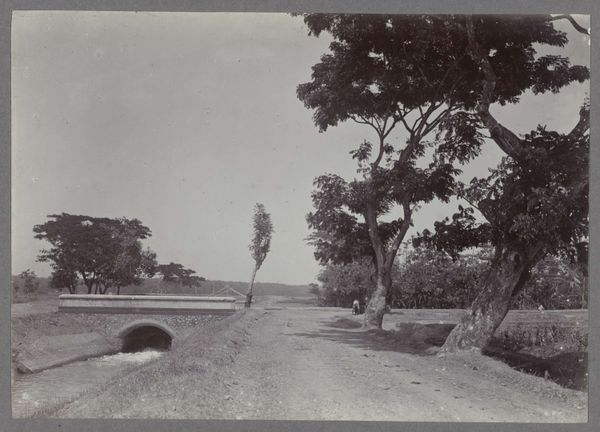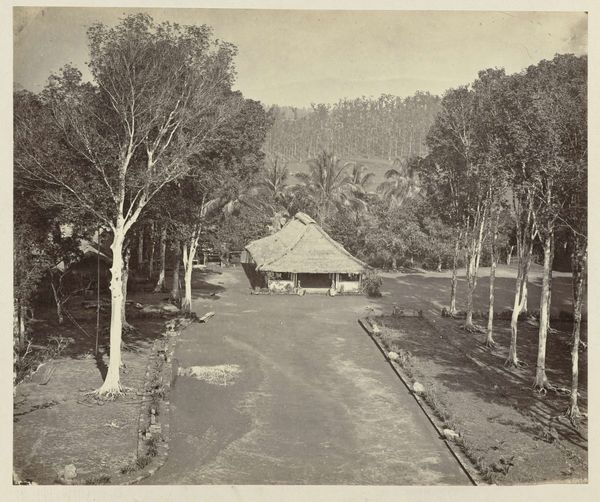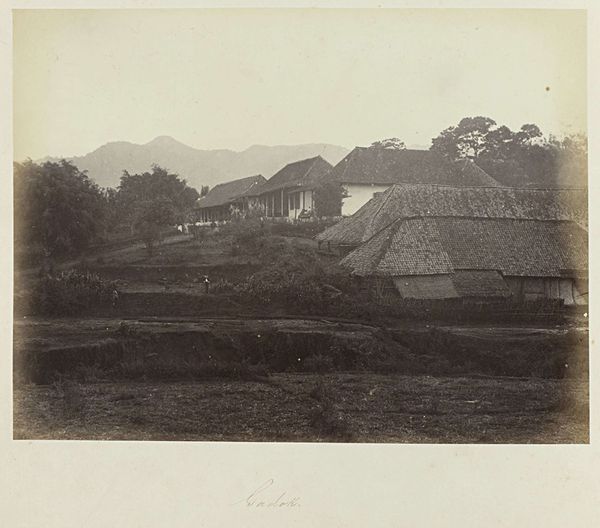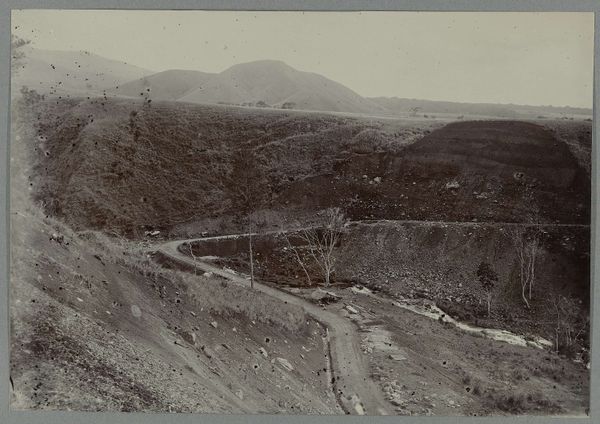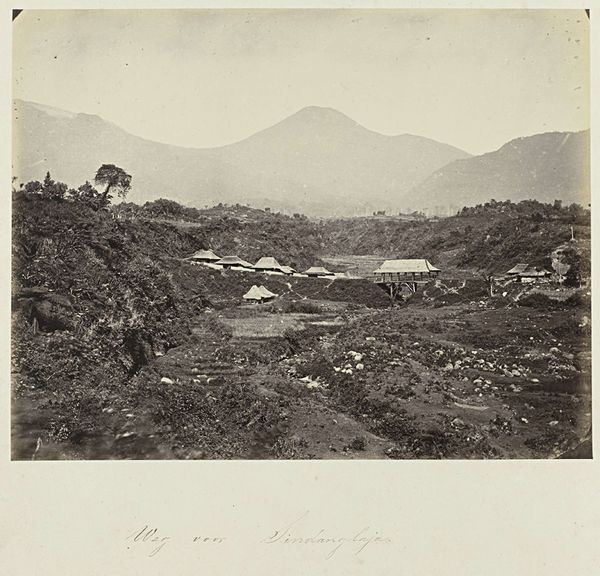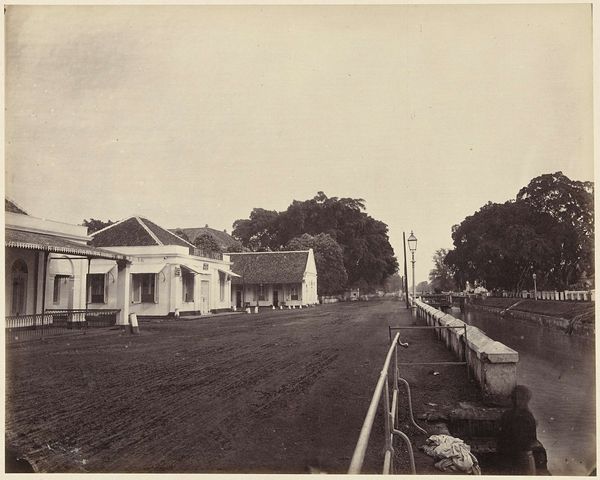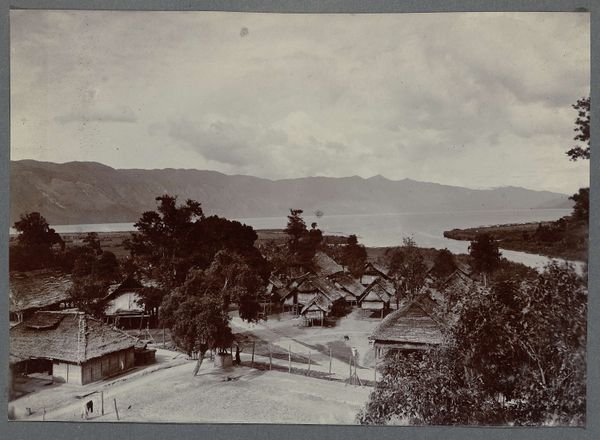
print, photography
#
african-art
# print
#
landscape
#
photography
Dimensions: height 190 mm, width 236 mm
Copyright: Rijks Museum: Open Domain
Curator: Let’s delve into “Sindanglaja,” a photograph created sometime between 1863 and 1869 by Woodbury & Page. It’s currently held at the Rijksmuseum. Editor: It’s a surprisingly tranquil landscape. The winding road, the little buildings dotted on the hill, the hazy mountains in the background... What catches your eye most in this image? Curator: I am interested in understanding how photographs like "Sindanglaja" served colonial interests. These images were widely distributed. They functioned as visual documents, shaping European perceptions of Southeast Asia. They also justified and aestheticized colonial endeavors. This image romanticizes Sindanglaja, and who controlled the narrative and how it benefited them are key points. Editor: That’s a different perspective than I was expecting. I was just thinking about the artistic choices, but you’re right. How would the average European have seen this? Curator: This photo, along with many others from the same period, suggests a serene and easily governable land, ripe for resource extraction. The ordering of the landscape with the neat rows of what appear to be cash crops like sugarcane or tea reinforces the idea of a productive and profitable colony under control. Do you see that manipulation now? Editor: I think so. It's less about the artistry, and more about the message the image conveys. Were the local populations considered at all? Curator: In most cases, no. Photography during this period was often used as a tool of power, to define the colonizer's place and erase indigenous cultures. Understanding this, "Sindanglaja" can become not just a picture but evidence of a power dynamic. Editor: So, beyond just admiring the scenery, we also need to understand its historical context and purpose. It really shifts my appreciation – or perhaps, my critique – of the artwork. Curator: Precisely. Examining the image through a critical, historical lens enriches our interpretation of both its subject matter and its role in shaping historical perspectives. I always appreciate thinking about how history informs visual culture. Editor: Thanks! I am very grateful for your deep historical knowledge about it! It’s eye-opening.
Comments
No comments
Be the first to comment and join the conversation on the ultimate creative platform.
